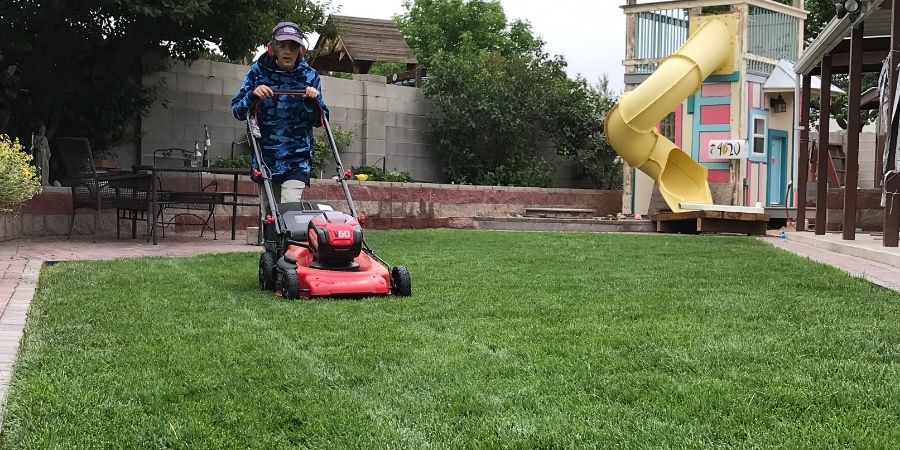Milorganite as a Starter Fertilizer
- "The Lawn Care Nut"September 9, 2021
This fall season a good number of you are going to be seeding your lawns. I’m talking to you folks growing cool-season lawns: Kentucky Bluegrass, turf-type tall fescue, and ryegrass. Summer has been tough on your lawn and you want to get some added thickening by overseeding.
The Process of Overseeding Your Lawn
There are a number of ways to go about seeding your lawn in the fall. Some folks look at adding some fresh grass to an already existing lawn while others go for the complete rehabilitation process of chemically burning down their existing lawn and start over from the ground up.
I’m one who advocates for the overseeding of existing lawns for the most part. I’m not a big proponent of the lawn burndown.
With that in mind, when folks overseed, the process looks similar to this:
- Cut the lawn
- Prepare the seedbed (mechanical aeration or raking)
- Apply seed
- Apply starter fertilizer
- Apply seed covering in thin spots (peat moss)
- Water, water, water!
Today I’m going to mostly address #4 there because this time of year I get folks asking “Is Milorganite a good starter fertilizer?”
Growing Grass - Seeding A Lawn In Fall + Fertilizer with Results
The answer is absolutely yes it is!
Milorganite has slow-release nitrogen which is great at the time of seeding but most importantly it has phosphorus which is what we want in a new grow to push as many roots as possible. Also with Milorganite being a natural product is great at building overall soil health in the process.
If you are seeding, I recommend that you apply Milorganite right on top of your seed at 12.5 lbs/1,000 sq ft. Then apply your seed covering on top of all that and get to watering!
Milorganite will be great for the new seed and its initial push, but it will also help your existing lawn to green and thicken up right alongside it. Cool-season lawns push roots in fall time naturally anyway and Milorganite will support and encourage it to push more!
You can apply Milorganite again 30 days after your seeding to continue to push it to get thicker and healthier before winter.

Andrew - Albuquerque, New Mexico
When Can I Mow After Overseeding?
Somewhere in between all this seeding and fertilizing and watering you’re going to have to mow the lawn. All that Milo is going to make your existing grass grow for sure. And you don’t want to get a fine from your HOA right?
And so that is the other question that comes up, “after my seeding when can I mow?”
I always say that it’s actually just fine to mow 10-12 days after your seeding, just don’t do a dance on the lawn.
In other words, get out there with your walk behind the mower and get it done, then get off.
You don’t want to overstress your existing grass by cutting overgrown, but you also don’t want to stomp all over your new grass that is growing in from seed. So just wait as long as you can stand it, and then get out and mow. Just be quick about it.
I’ll see you in the lawn!

